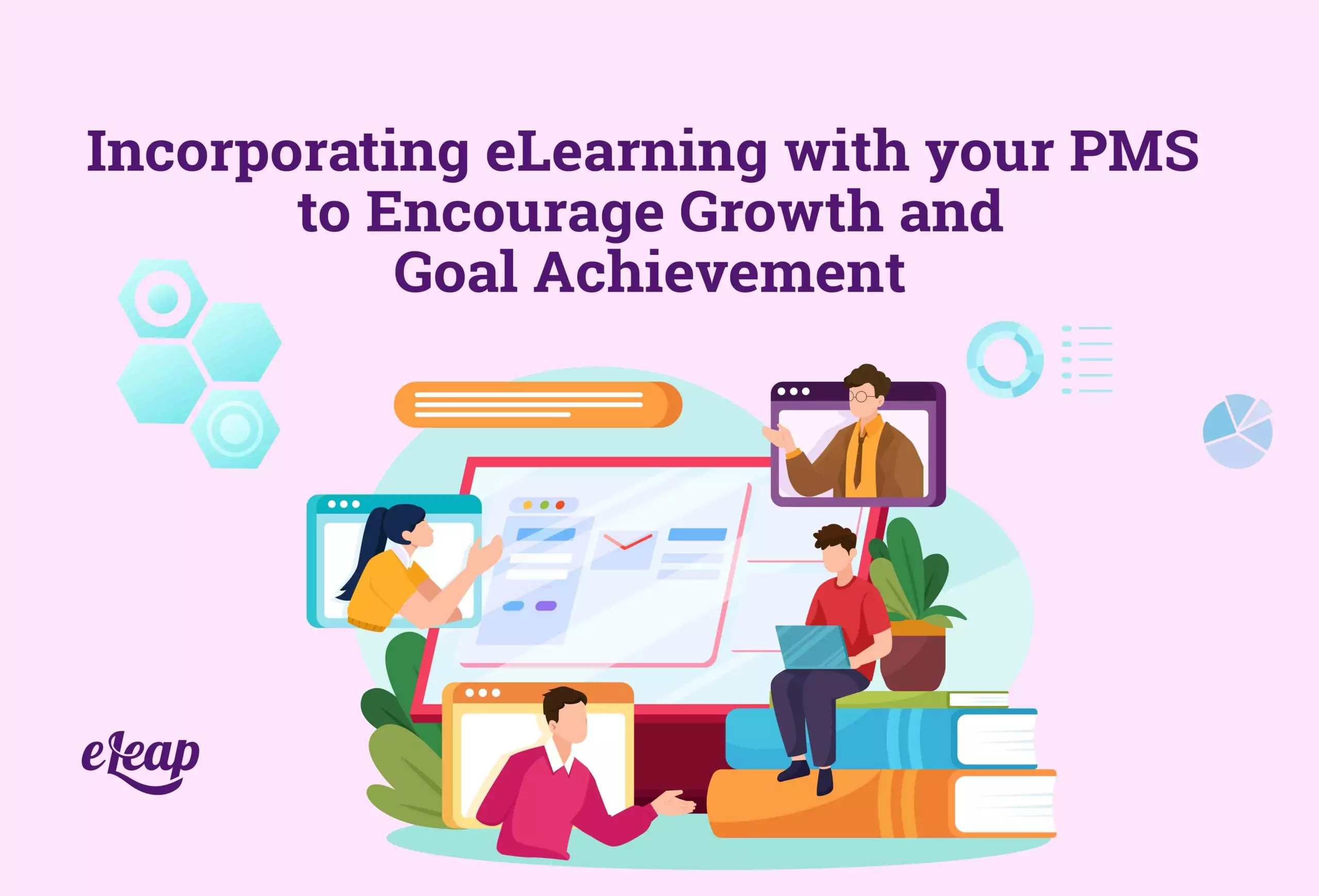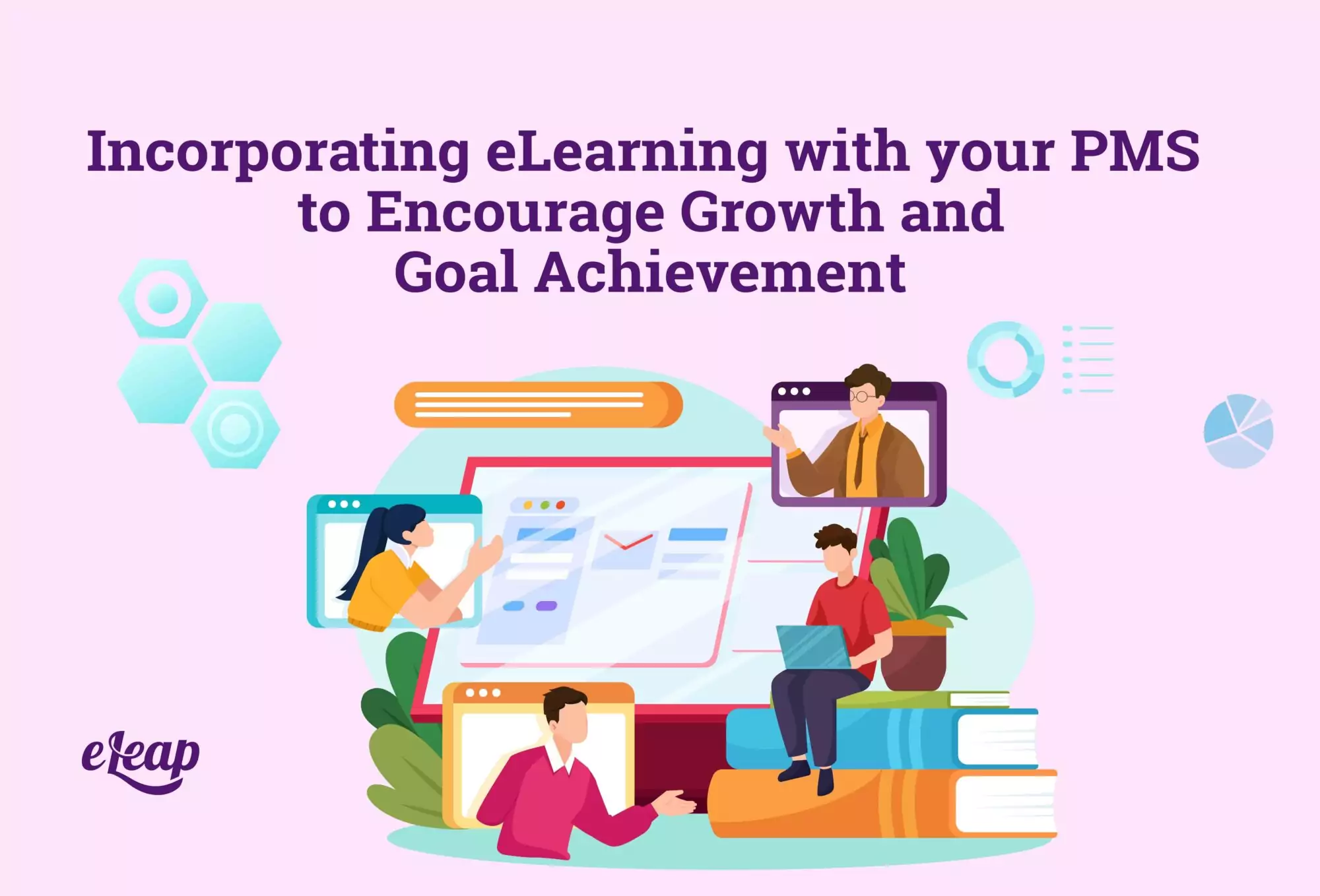Incorporating eLearning with your PMS to Encourage Growth and Goal Achievement

If your organization already has an LMS in place, you might think that you can move to the PMS and get started on the next thing. The reality is, though, that these two systems aren’t static—they are very much interlinked and rely on each other to build the organization that you’ve always wanted. But what if you don’t want to make people go through the effort of getting into the LMS, finding the relevant training or educational resources, and then utilizing them to improve their own performance, you can make the process easier by incorporating the appropriate training and eLearning resources right into your PMS.
Having a system that tracks employee performance and learning can help you link training modules and learning opportunities to the performance of your team. Then, instead of people having to take the notes from their performance reviews and go back to the LMS and find the appropriate training, it’s all synced together in one place. You can assign training based on performance, and so much more.
This all helps you create more motivated, engaged employees. Those employees will perform better and help the organization become more successful as a result. So naturally, you’ll want to incorporate all the resources that you can to give your employees the tools and resources they need to achieve their goals. This, of course, requires employee involvement.

Involve Employees in the Process
What’s the best way to find out how people perform best or what type of learning could boost their performance? No, it’s not a survey or test or even a review of their skills. It’s as simple as asking them. Although there may be the occasional person who doesn’t know what they need or how they learn best, most people will have input that is valuable and that gives them a sense of ownership in the process of growth and performance management.
Ask employees what kind of learning modules will best help them improve the areas of performance that need attention. Find out how they learn most effectively and what kind of integrated solutions they would appreciate to help them take ownership of and be accountable for their performance on the job, as well as their growth and goal setting. When everyone’s onboard, the process will be much smoother than if you’re just trying to force people into a new PMS solution or way of monitoring performance.
Setting Goals and Creating Performance Milestones
Now that you have employees on board, you will be able to create goals and milestones for performance for each of them. The PMS will show you the analytics of where people are performing well and where they might need a little more help. Then, you can utilize the learning incorporated into the platform to give them new initiatives and goals to reach. You can even automate this process so that when someone reaches a certain point in their performance, the learning options change, for one example.
When you set goals for improvement and you can immediately connect the resources that people need to achieve those goals, you are setting your team up for success. You are also creating a simple way to monitor progress and watch for those major performance milestones so that you can ensure that everyone is on the right track.
Upskilling When Performance is Lacking
Having eLearning resources connected to your PMS will save several steps in the process of training and upskilling employees. It will be easy to see, in real-time, how well people are doing and where they need help or improvement. Then, you can turn to the learning solutions and find the resources that will provide them with the best assistance and training. This boosts performance a lot faster than previous methods and it saves a ton of extra time going back and forth between the LMS, PMS, and other training resources.
When you choose to upskill employees, you’re also giving them the chance to grow and get promoted from within. That means you’ll spend less on hiring and replacements, too, because people who feel valued and appreciated aren’t going anywhere. If you stick to the traditional ways of keeping your learning and performance management separate, you’re not going to give them that sense of appreciation and value, nor are you going to be making the most of your investment in performance management.
Should You Use the Same Resources?
This is a tricky question, but one that’s important to consider. Your LMS and your training resources that are part of your PMS can be one and the same, but that’s not always the case. If you’re incorporating specific training insights or customized lessons based on performance reviews, this could be a different database or educational resource altogether. Ultimately, you have to think about what works best for your organization.
You may decide to incorporate separate learning platforms or initiatives with your performance management and keep your LMS for its learning capabilities for onboarding, upskilling, and other needs. Ultimately, you need the ideal blend of resources that deliver the ideal learning experience and a proper training environment. Whether that means creating separate training resources or linking the existing LMS and PMS platforms that you are using will depend on the circumstances of your performance management and what kind of solutions you want to provide.
Engaged Employees are Happy Employees
The biggest takeaway here comes down to employee engagement. When your employees are engaged, they’re happier and they’re more likely to produce good results and perform at their best. They are also going to take more ownership over their job role and ensure that they are doing everything that they can to deliver the best solutions every single time. That is if you provide them with the right training and eLearning resources, including a modern approach to project management.
Keep these things in mind and see how eLeaP can help you integrate eLearning and performance management to streamline your employee growth and more.